Local Man Summits Highest American Mountain With Diabetes
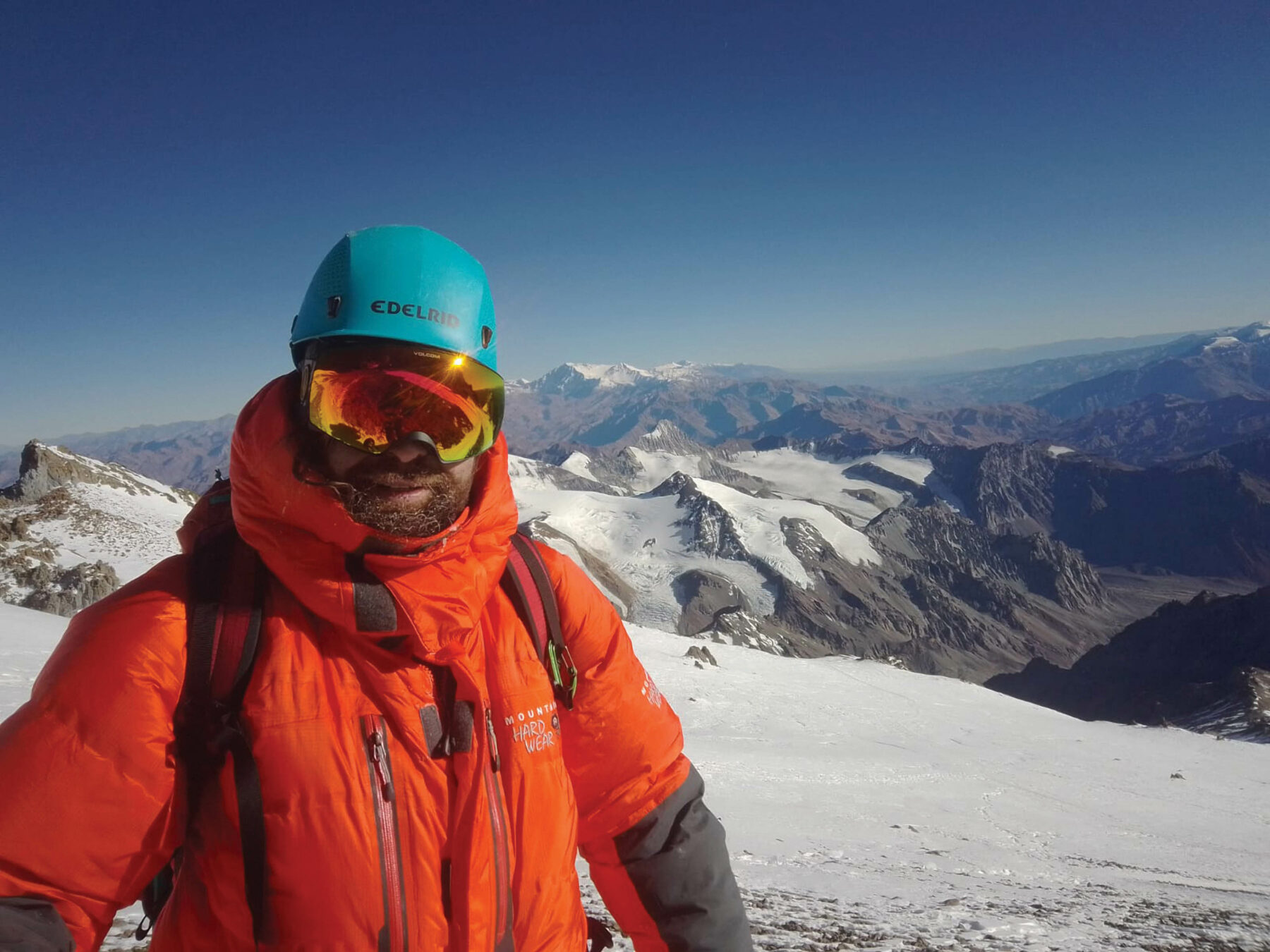
It’s Jan. 31, 2023. The temperature is negative 30 degrees Fahrenheit, and on top of that, the wind is piercing. A team of five is about 5,974 meters above sea level with about 1,000 left to go, pushing to reach the summit of Aconcagua, the tallest mountain in the Western Hemisphere.
One of the team members starts feeling sick. He checks his glucose monitor, and his blood sugar is sky-high. He realizes his insulin pump froze from the extreme temperature, despite it being buried beneath layers of clothes and pushed against his body.
In a swift moment, he reaches for the pre-loaded syringes he prepared for mishaps like this, but he knows the second the syringe makes contact with the freezing air, it’ll be like ice. His team forms a cocoon around him, providing just enough warmth for a manual injection.
However, when he’s about to inject the needle into his stomach, it catches his suit and immediately breaks off. While the other team members curse in a panic, he knows he has two backup pre-filled syringes as well as empty ones and a vial of insulin to draw if needed.
Luckily, when he grabs the second syringe, he’s able to inject it and continues to the summit.
This man is Tim Krauss, a local Austinite with Type 1 diabetes who aims to climb the seven tallest mountains in the world; in January, he started with Aconcagua. The reason? To show that nothing, even an autoimmune disease like diabetes, can limit you from pursuing adventure.
“I want to create awareness (around diabetes),” Krauss says. “A lot of diabetics put a lot of limitations on themselves because it’s such a pain in the ass.”
The Makings of a Mountain Man
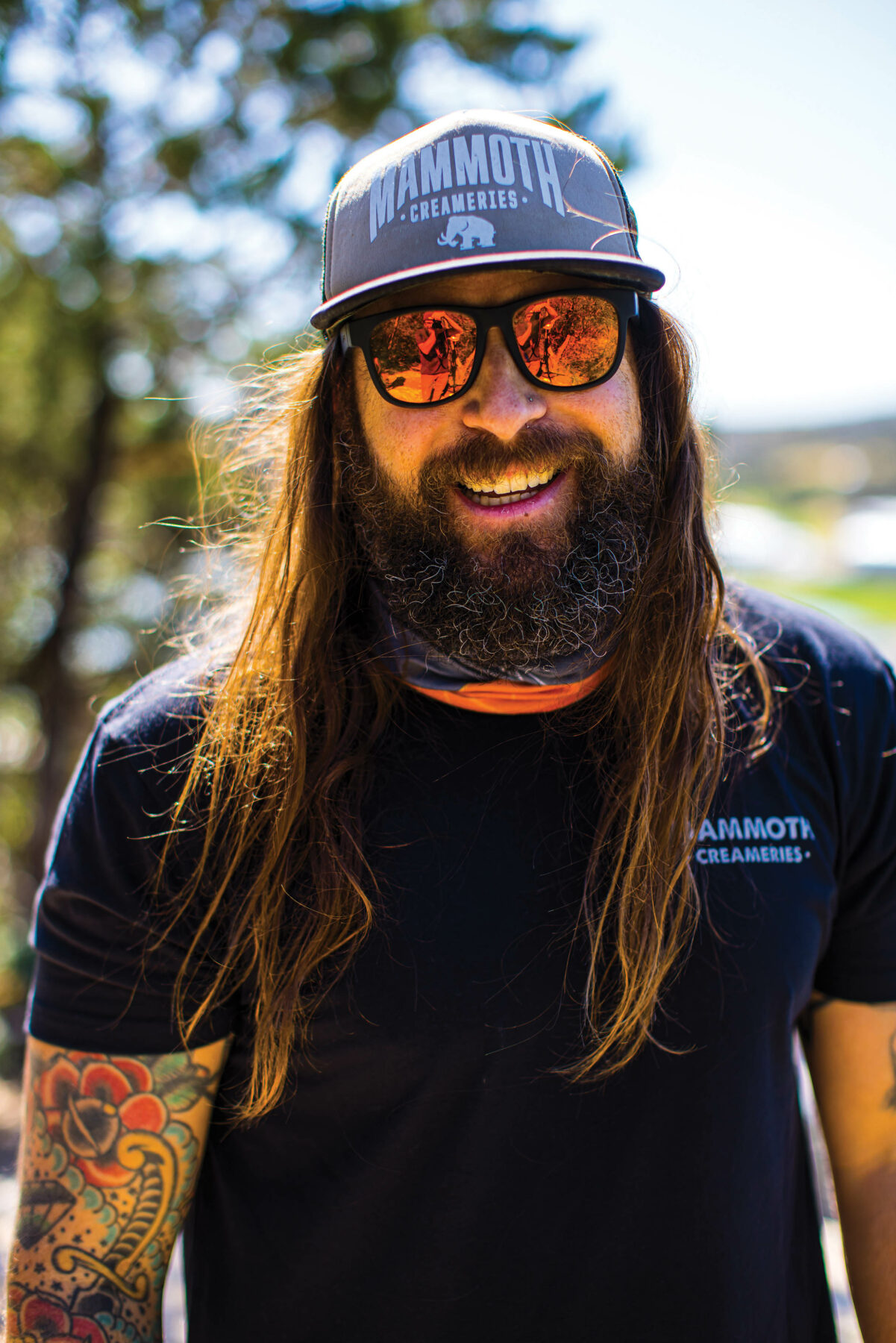
Credit to Brian Fitzsimmons
Though Krauss had never climbed something of this height, he always loved mountaineering and grew up hiking with his family in Germany and Austria. But when the opportunity to climb Aconcagua came up in June 2022, he committed immediately. As he shared his dream with his wife and children, they eventually grew to be on board, and he was set to depart in January 2023.
In preparation for his trip, he hired mountaineering coach Leif Whitaker. Though Krauss is an ultra runner, he realized this wouldn’t be enough for the treacherous conditions of Aconcagua. Together, he and Whitaker transformed his entire training plan and did six months of strength training. Much of the training was lower heart rate exercises to practice slowly ascending steep slopes with loaded backpacks, similar to how it’d be on the mountain.
In addition to shifting his fitness training, Krauss also had to shift his nutrition plan. Krauss says he had worries about his diet going into his trip.
“How is my body going to react to all those carbs? Will the insulin work in the way it’s worked in the past?” Krauss says. “These are things that if you don’t have an answer (to), you die.”
So, about three to four months out from his trip, Krauss switched from his diabetic low-carb and high-fat diet to a carb-heavy diet to re-familiarize his body with consuming carbs, as most of the mountain snacks required more sugar and carbs for calories and energy.
The Deal With Diabetes
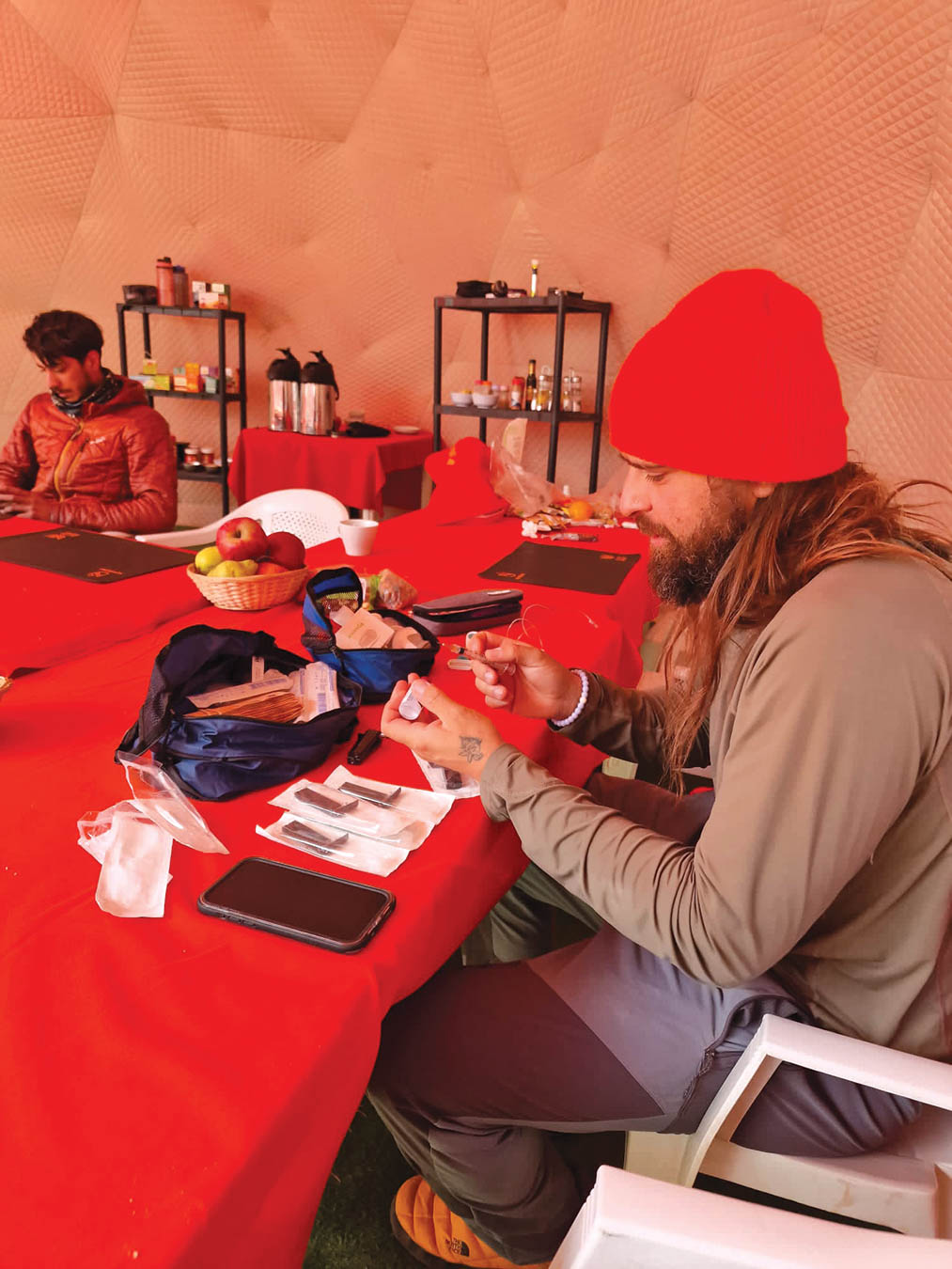
Krauss was diagnosed with diabetes at 28 years old, but prior to his diagnosis, he had no idea how people managed diabetes, even though he had a good friend who was diabetic.
“It’s not that I didn’t care; he was my buddy, but it’s just diabetes — who cares?” Krauss says. “And then, I wake up with diabetes, and I was like, ‘Holy shit, this might be one of the most underrated autoimmune diseases on the planet.’”
According to the Juvenile Diabetes Research Foundation, about 1.45 million people in the U.S. have Type 1 diabetes, and 64,000 are diagnosed with it every year in America. Despite the high number of those experiencing diabetes, Krauss says the resources for high-intensity activities, like mountaineering, with diabetes were slim.
Despite having had years of practice managing diabetes, Krauss was preparing to do it in the unfamiliar terrain of the mountain, an entirely different story.
“Diabetes wants attention 24/7; it doesn’t matter where you are, what you do,” Krauss says. “When you go into the mountains, everything changes every single day. You just don’t know what’s going to happen (or) how your body’s going to respond.”
The Summit Story
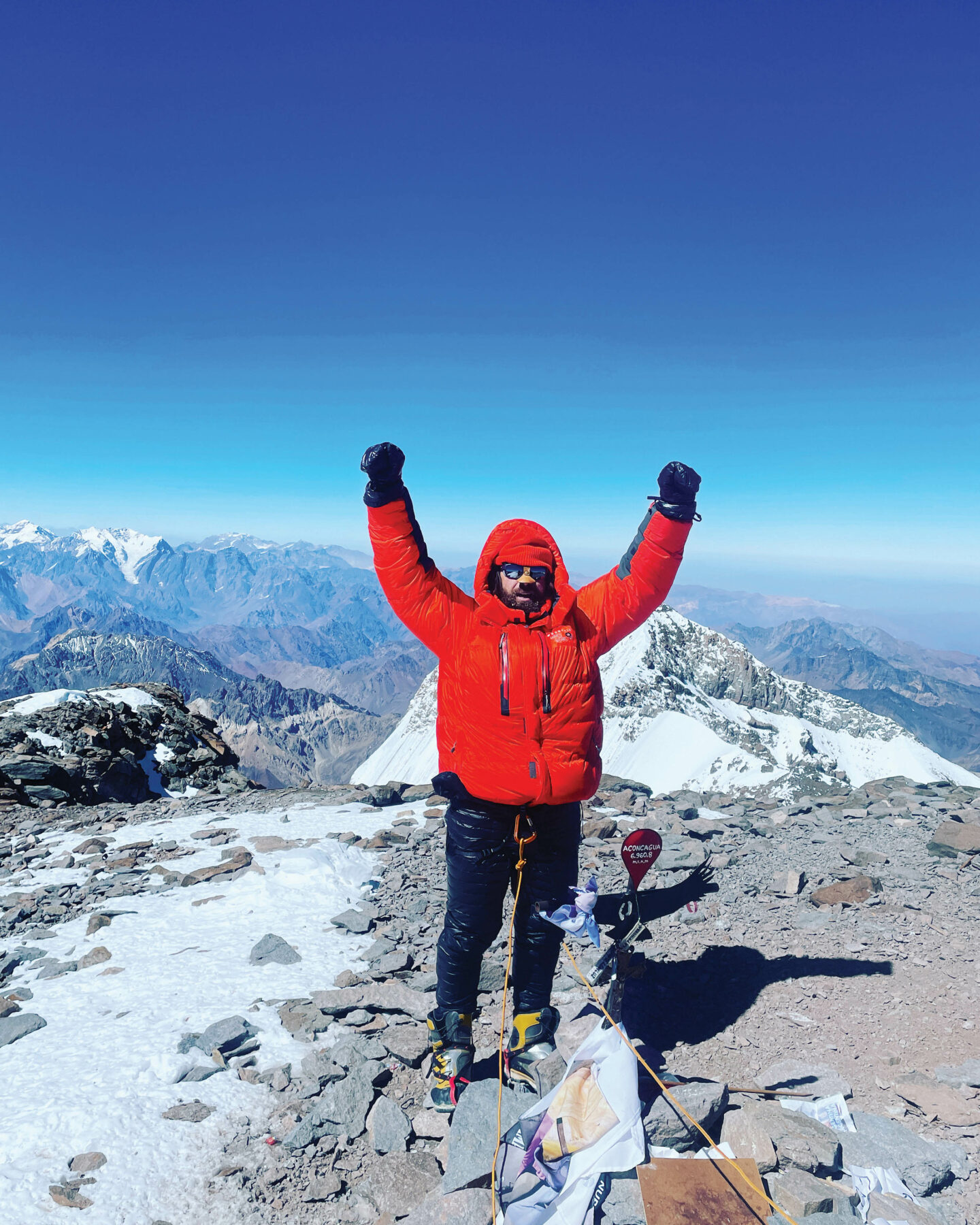
On Jan. 10, Krauss launched from Austin to Argentina, and the expedition started three days later with a team of 15 — all people from across the globe, each with their own reasons to climb.
Krauss says even though Mount Everest is technically the tallest mountain in the world, Aconcagua is probably almost equal in difficulty, if not more, because of its harsh terrain. And time on the mountain feels relatively slower than daily life; everything takes longer because of the altitude, even something as simple as getting dressed.
“Never ever do you want to push so hard that your heart rate gets elevated,” Krauss says. “Even the slightest elevation in heart rate will have you bent over trying to breathe.”
Throughout the trip, Krauss experienced many symptoms that would’ve ushered in a trip to the emergency room if he were in Austin; but here on the mountain, they were expected. Krauss and other teammates even had hallucinations from hypoxia, which occurs from low levels of oxygen in the body.
Just as symptoms are relative on the mountain so is distance. Even if you can physically see the summit, Krauss says the trip to it will likely take several hours. For Krauss, he and a guide made it up in 18 hours while others made it in 27.
“Everything is ‘Andes close’ — you’ve seen it, but it’s eight hours away,” Krauss says. “The mountain is so big that, for us mortals, we cannot conceptualize the true magnitude of the situation.”
Not only does physical exertion become more challenging in harsh conditions but making decisions feels more difficult, and Krauss had to make many that felt unnatural. For instance, when his insulin pump froze, he had to manually monitor his glucose levels to see if he needed insulin. However, once he reached the summit, he didn’t need to inject insulin as much as his appetite disappeared with the increased altitude.
Luckily, Krauss had a team who invested in his situation by learning more about diabetes and helping him carry insulin. One of them even melted a frozen insulin bottle with his mouth so Krauss could draw insulin from a vial to put in a syringe when he ran out of pre-loaded syringes.
Unfortunately, many accidents also occurred on the trip, including one of the teammates falling down the mountain and other deaths both during the trip and afterward. Out of the 15 who went, only five stayed to the end, and out of those, only he and two others made it to the summit. The other 10 returned home because of trauma or deaths.
“You can have the best intentions and attitude toward making it to the top but, at the end of the day, the mountain decides who comes up and who doesn’t,” Krauss says. “It’s a weird thing to say, but when you’re in it, it makes perfect sense because that mountain is so big; you’re so insignificant. It’s seen tons of people trying to do what you want to do, and it doesn’t negotiate.”
The Coming Climb
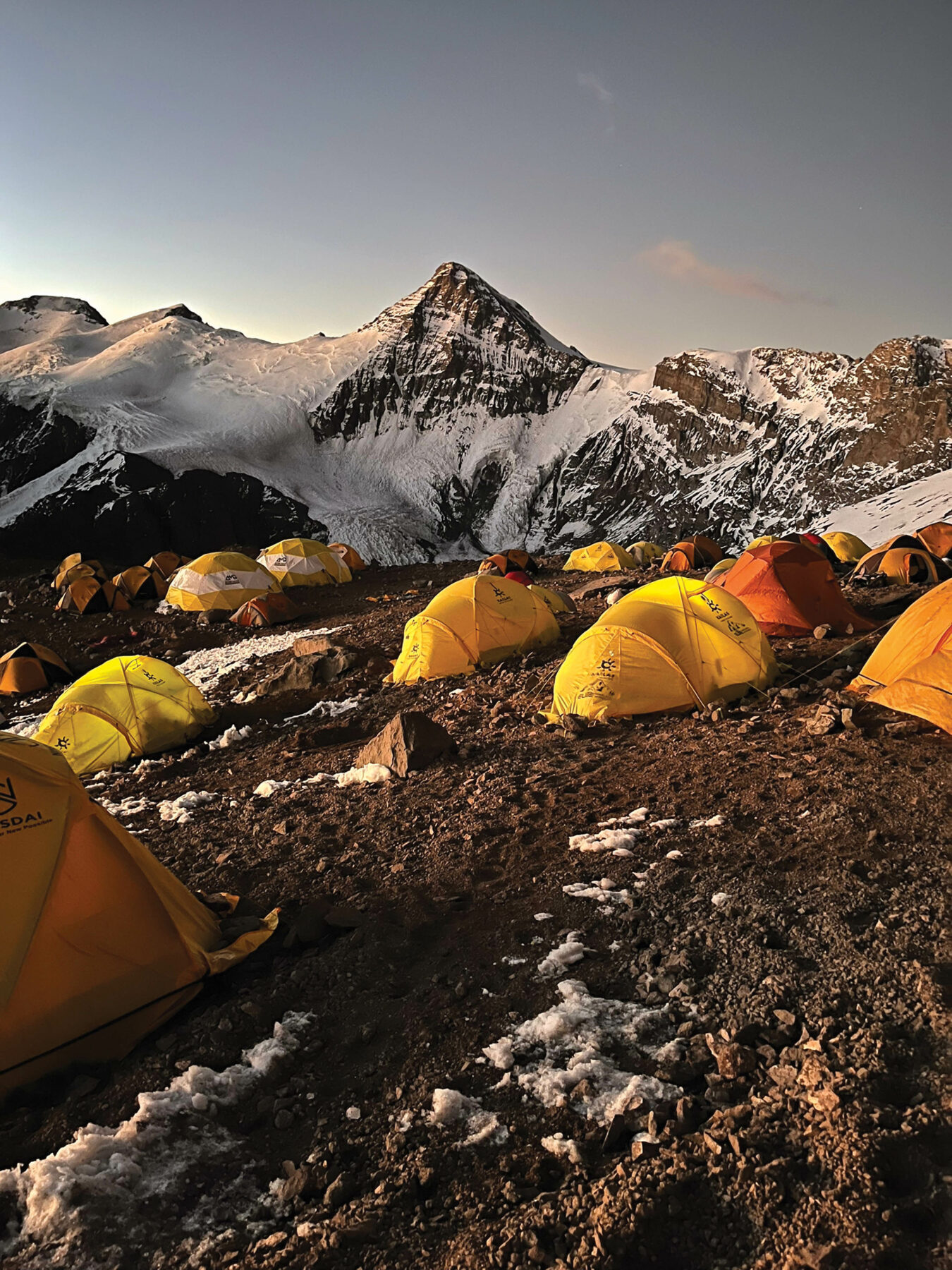
After returning from Aconcagua on Feb. 4, Krauss admits he’s been thinking about his next trip since. His original plan was to climb Mount Kilimanjaro this August, but after the accidents on this past trip, he decided to take the year to recover and process his experience. His soft plan is to do Mount Everest next April and, from there, a few mountains each year.
Either way, Krauss hopes his experience encourages those with diabetes who want adventure and provides the resources to pursue it. His biggest takeaway was a shift in his worldview of understanding what’s truly important — something he says people neglect amidst day-to-day stresses.
“An experience such as (climbing Aconcagua), diabetes… not diabetes, just helps with perspective,” Krauss says. “Nothing is important; the only thing that matters is your family and the people you love (…) Being on that mountain, when you’re in such a raw, unfiltered and unprotected situation — everything changes.”






